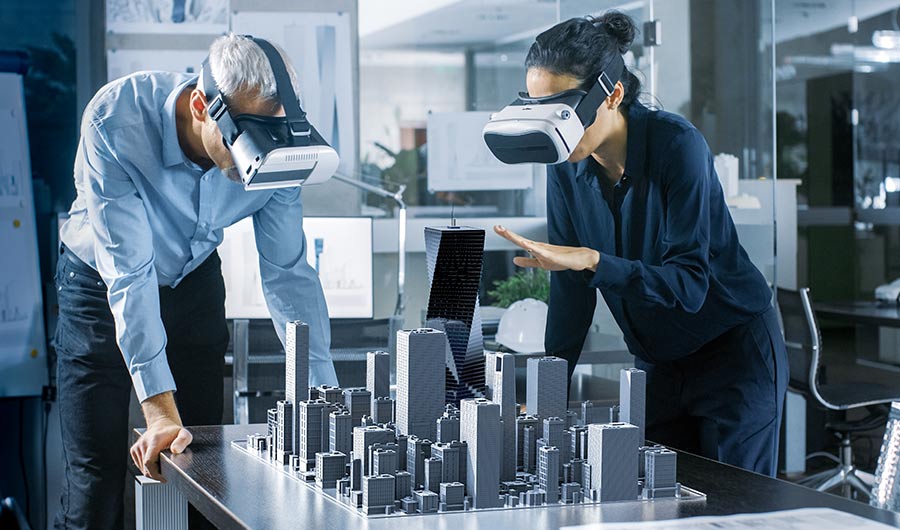Models Map City Residents’ Aversion to Pollution

Gorodenkoff via Shutterstock
(Inside Science) -- Imagine the perfect city: It’s clean, the schools are excellent and crime is low. Constructing this flawless metropolis is a tall order and people don’t always prefer the most efficient or environmentally friendly design. City planners need accurate models to help predict where people will want to live.
New research released in the journal Environment and Planning B: Urban Analytics and City Science focused on one important factor: air quality. Their simulations revealed a compelling feedback loop: City-dwellers concerned about the health impacts of air pollution tend to move farther away from the city center, driving higher rates of air pollution. Conversely, those more concerned about the environmental impacts of air pollution opt for shorter commutes and tend to move closer to the city center, a decision that bodes well for overall air quality but not necessarily for their individual health.
The researchers used three different kinds of models to track a hypothetical city’s expansion based on its residents’ concerns, including a type of theoretical modeling called agent-based modeling, which consider the complexity of human decision-making.
Mirjam Schindler, a study co-author and geographer at the University of Canterbury in Christchurch, New Zealand, said that thanks to theoretical models, “we can look at what is the impact of changing one parameter rather than having to consider the specifics of one particular city.” In their simulations, the city center sits clustered at the intersection of two perpendicular roads, surrounded by agricultural land.
The team plugged previous air quality samples, transport costs, and known vehicle emissions rates, among other variables pulled from other research, into the models, and calibrated residents’ responses to them. Then, they watched the city grow.
The researchers' model suggests that residents who are concerned about health impacts of air pollution often choose to live far from the city center, where they believe the air to be cleaner. These residents are less concerned about the commute distance between home and work -- even if the longer commute means more pollution. The same model also suggests that land closer to the city center would be left undeveloped as homes increasingly sprung up around the city’s edges, and these undeveloped lands can become green spaces that filter polluted air.
In comparison, eco-friendly urbanites who want to minimize the environmental impact of their commute tend to live closer to the central business district, which decreases the city’s perimeter and reduces the total amount of pollution emitted but increases the urban residents’ exposure to pollutants in the air. In this model, there were pockets of green space along transport corridors near the center of town, but fewer parks along the city edges.
The study also modeled residents’ responses to the different places where they are exposed to pollution. In real life, drivers are exposed to the highest amount of pollution while commuting along busy roads. Because lush plant-filled spaces can act as a natural buffer that filters out pollutants from the air, green spaces cropped up along car-clogged corridors throughout the simulation.
“Green spaces are important in order to create that distance between housing and traffic,” said study co-author Geoff Caruso, professor of urban analysis and modeling at the University of Luxembourg.
Throughout the simulations, health-conscious commuters concerned about air quality on the road took indirect routes through residential areas. Similarly, residents who were concerned about exposure to air pollution while they were at home opted to live in houses far from the main roads, which increased commute time. Both behaviors increased the overall emissions, but the number of people exposed to pollution dropped.
Lisa Schweitzer, professor of urban planning at the University of Southern California in Los Angeles, cautions that while these models can be helpful predictors of human behavior, “we don't know how likely any of these scenarios are.”
Residents in both models increased the footprint of the city, which allowed for more green spaces closer to the city center. “The greening of main access roads and local roads closer to the center is absolutely crucial,” said Caruso.
Caruso provided a caveat: While parks like New York City’s Central Park are important because they provide an opportunity for city-dwellers tangled up in concrete to enjoy the natural world, “greening” dividers and medians along roads should be considered too. “[Central Park] is too big to reduce the effect of traffic pollution,” said Caruso. “You need something smaller, along every lane.”

